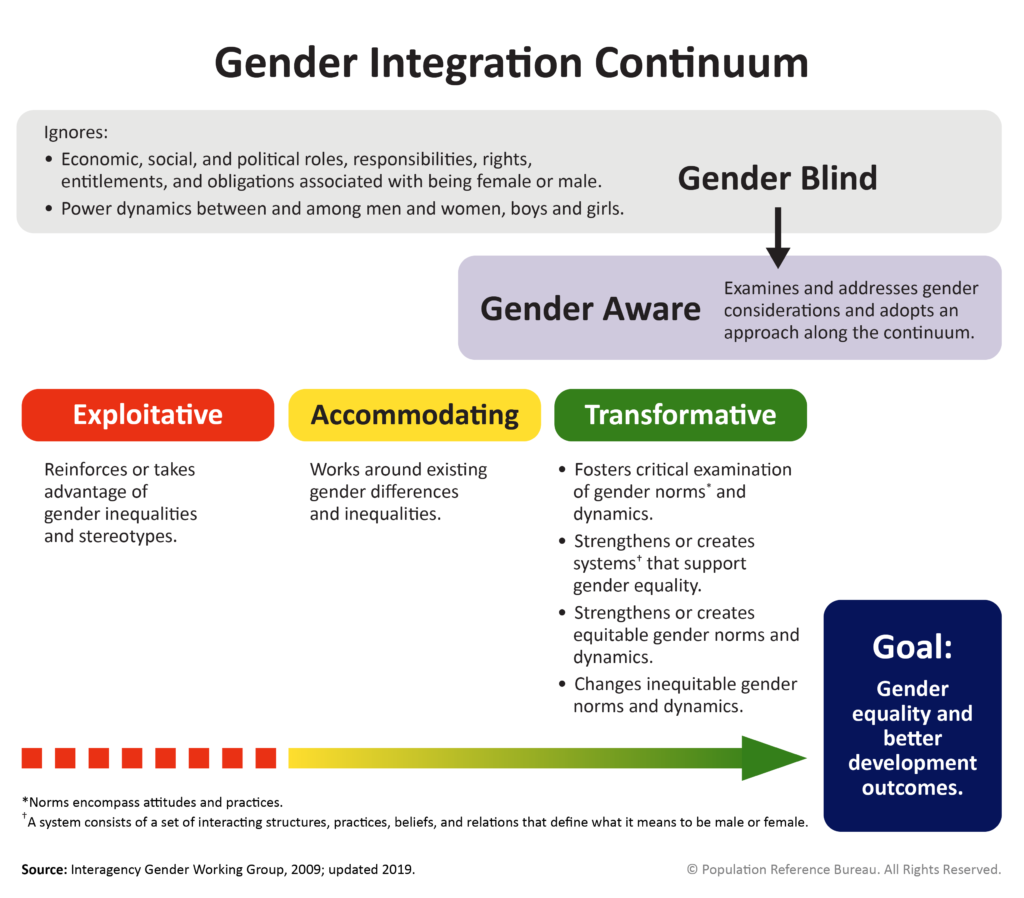School-Related Gender-Based Violence
This presentation provides an introduction and measurement frame work to school-related gender-based violence.
Our training materials can be used to introduce a broad range of audiences and backgrounds to important concepts related to gender and health. Each training course focuses on one of five themes that complement the CORE Gender 101 agenda: Gender Integration, HIV + Sexuality, Safe Motherhood, Gender-Based Violence, and Constructive Male Engagement. The courses are designed to meet the geographic and technical needs of cooperating agencies, USAID Missions, and specific projects. Materials range from basics such as using a shared gender vocabulary and programmatic guidance, to user guides on how to conduct a gender analysis, to exercises for gender trainings. The trainings are geared to be used by anyone and with any audience, even those learning about gender for the first time!
Our popular Gender Integration Continuum framework is an important tool to assess how programs do (or do not) address gender and move them toward more gender-transformative actions. An updated User’s Guide for facilitating training on use of the continuum is available, along with other materials.
This presentation provides an introduction and measurement frame work to school-related gender-based violence.
Study summary highlighting different strategies to improve how family planning programming can better address the contraceptive needs of men.
Studies in South Asia suggest child marriage is a strong risk factor for intimate partner violence (IPV), but evidence outside the region is lacking. This study looks at linkages between child marriage and IPV across 34 countries.
Many international development organizations have committed to advancing gender equality in their programs as an essential component of successful development. Less attention has been given to how those same principles and practices are- or are not – applied to organizational operations and culture, and what that means for their ability to effectively implement gender-equitable programs. Organizations are beginning to recognize the value of gender equality as an organizational as well as a programmatic priority, and realize that gender mainstreaming – the pursuit of greater gender equality internally – is both the right thing and the smart thing to do.
This brief presents data to help policymakers and others understand the nature and extent of the harm caused by IPV, especially as it relates to women’s reproductive health, family planning, and autonomy, and highlights opportunities for action.
"Family planning saves lives" is a simple health prescription that resonates globally. A critical challenge is to ensure that policies and programs embrace the well-established benefits of enabling women to choose whether and when to become pregnant—actions and values that are integral to human rights. Policymakers should be asking, "What do human rights mean in relation to family planning, how do we incorporate them into our country family planning and development plans, and why is that important?"

